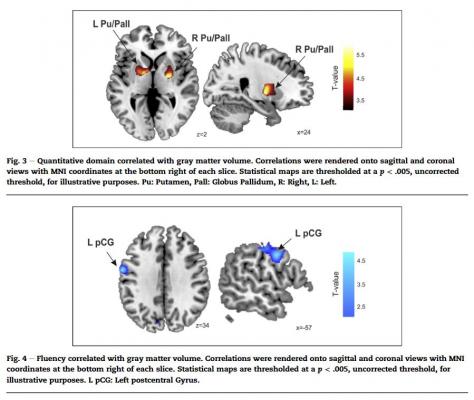A systematic linguistic profile of spontaneous narrative speech in pre-symptomatic and early stage Huntington’s disease

Cognitive decline accompanying the clinically more salient motor symptoms of Hunting-ton's disease (HD) has been widely noted and can precede motor symptoms onset. Lessclear is how such decline bears on language functions in everyday life, though a smallnumber of experimental studies have revealed difficulties with the application of rule-based aspects of language in early stages of the disease. Here we aimed to determinewhether there is a systematic linguistic profile that characterizes spontaneous narrativespeech in both pre-manifest and/or early manifest HD, and how it is related to striataldegeneration and neuropsychological profiles. Twenty-eight early-stage patients (19manifest and 9 gene-carriers in the pre-manifest stage), matched with 28 controls,participated in a story-telling task. Speech was blindly scored by independent raters ac-cording to fine-grained linguistic variables distributed over 5 domains for which compositescores were computed (Quantitative, Fluency, Reference, Connectivity, and Concordance).Voxel-based morphometry (VBM) was used to link specific brain degeneration patterns toloci of linguistic decline. In all of these domains, significant differences were observedbetween groups. Deficits in Reference and Connectivity were seen in the pre-manifeststage, where no other neuropsychological impairment was detected. Among HD patients,there was a significant positive correlation only between the values in the Quantitativedomain and gray matter volume bilaterally in the putamen and pallidum. These results fillthe gap of qualitative data of spontaneous narrative speech in HD and reveal that HD ischaracterized by systematic linguistic impairments leading to dysfluencies and disorga-nization in core domains of grammatical organization. This includes the referential use of noun phrases and the embedding of clauses, which mediate crucial dimensions ofmeaning in language in its normal social use. Moreover, such impairment is seen prior tomotor symptoms onset and when standardized neuropsychological test profiles areotherwise normal.